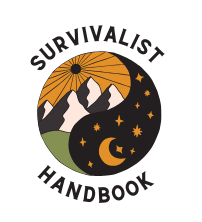Are you someone who values self-reliance and being prepared for any situation that life may throw your way? Do you have a strong interest in survival readiness and the skills necessary to navigate through various survival scenarios? If so, then the concept of “bugging in” and fortifying your home before a potential societal collapse or natural disaster may be of great interest to you. In this article, we will explore the importance of fortifying your home, discuss practical skills such as building rain barrels and maintaining essential gear, and provide tips on long-term food storage and disaster preparedness. So, if you’re ready to take your survival preparedness to the next level, read on to discover how to make your home a secure haven before SHTF.
Bugging In: Fortifying Your Home Before SHTF
When it comes to emergency preparedness, one of the most important steps you can take is to fortify your home. By strengthening the vulnerabilities in your home, you can increase your chances of survival in a variety of situations, from natural disasters to societal collapse. In this comprehensive guide, we will walk you through ten key steps to bugging in and fortifying your home before SHTF (Shit Hits The Fan).
1. Assessing Your Home’s Vulnerabilities
The first step in fortifying your home is to assess its vulnerabilities. Inspect weak points in the structure, such as cracks in the foundation or walls, loose shingles on the roof, or any other areas that may compromise the structural integrity of your home. Additionally, evaluate entry points for potential threats, such as doors, windows, and garage doors. Identify areas of poor visibility, such as blind spots where intruders could hide undetected. Lastly, check the integrity of windows and doors, making sure they are strong, secure, and capable of resisting forced entry. Assess the strength of locks and security systems, ensuring they are up to date and working effectively.
2. Reinforcing Doors and Windows
The second step in fortifying your home is reinforcing your doors and windows. Install deadbolt locks on all exterior doors, as they provide an extra layer of security compared to standard locks. Consider adding security film to your windows, which can make them more resistant to shattering and intrusion attempts. Reinforce door frames with metal plates, making it harder for intruders to kick in doors. Securing sliding glass doors is essential, as they are often targeted by burglars. Lastly, consider using window bars or safety screens, which can prevent unauthorized access while still allowing ventilation.
3. Strengthening Perimeter Defense
Building a sturdy fence or wall around your property is an effective way to strengthen your perimeter defense. Not only does it act as a physical barrier, but it also serves as a deterrent to potential intruders. Installing motion sensor lights around the perimeter of your home can help deter unwanted visitors by illuminating their presence. Another effective method is to create natural barriers with thorny plants, which can make it difficult for intruders to navigate your property. Setting up security cameras around your home can provide valuable evidence in case of a break-in. Finally, implementing a home alarm system can further enhance your home’s security by alerting you and the authorities in case of a breach.

4. Stockpiling Essential Supplies
Preparing for an emergency requires stockpiling essential supplies. Start by storing ample food and water for an extended period. Consider non-perishable food items and water storage solutions, such as water barrels or large containers. Gathering medications and first aid supplies is crucial, as access to medical care may be limited during a crisis. Stock up on batteries and flashlights to ensure you have a reliable source of light. Having a backup source of power, such as a generator, can provide electricity when the grid is down. Additionally, acquiring tools for self-sufficiency, such as gardening or hunting gear, can be invaluable for long-term survival.
5. Developing a Communication Plan
In times of crisis, having a communication plan is vital for staying connected with your loved ones and obtaining important information. Establish designated meeting points for family members in case you need to evacuate or regroup. Create a list of emergency contacts, including local authorities, neighbors, and family members. Obtain two-way radios or walkie-talkies for easy and reliable communication, especially when cellular networks are down. Set up signal devices, such as flares or mirrors, to attract attention or communicate your location. Installing a backup communication system, such as a satellite phone, can be a lifesaver when all other means of communication fail.
6. Enhancing Home Security Measures
Adding security signs and stickers around your property can act as a deterrent to potential intruders. The mere presence of these signs can make criminals think twice before targeting your home. Installing window and door sensors can provide an additional layer of security by alerting you when a window or door is tampered with. Using security cameras with remote monitoring capabilities allows you to keep an eye on your home even when you’re away. Consider implementing a panic room or safe space in your home that can serve as a last resort in case of an intruder. Lastly, training your family members in self-defense techniques can be critical for their safety and well-being.
7. Creating a Survival Shelter
Creating a designated survival shelter in your home is essential for bugging in during an emergency. Designate a secure room or basement as your shelter, ensuring it has reinforced walls and limited access points. Prepare emergency kits with essential survival items, including food, water, first aid supplies, blankets, and communication devices. Building a temporary shelter in your backyard can serve as an alternative option if your home becomes uninhabitable. For long-term survival scenarios, consider constructing a hidden underground bunker, providing additional protection and resources. It’s also important to have a plan for alternative shelter options, such as staying with trusted friends or family members.
8. Securing Access to Clean Water
Access to clean water is crucial for survival. Install a water filtration system in your home, ensuring that you have a reliable source of clean drinking water. Storing water in large containers or barrels is also recommended, providing you with a backup supply in case of water shortages. Identify natural water sources nearby, such as rivers or lakes, where you can obtain water if necessary. Moreover, learn methods for water purification to make contaminated water safe for consumption. Investing in rainwater collection systems can also be a sustainable way to secure access to clean water during an emergency.
9. Fortifying Supplies and Storage Areas
Securing your supplies and storage areas is essential to ensure that your essential items are protected and easily accessible. Use sturdy locks and shelves to secure storage areas, preventing unauthorized access and theft. Organize supplies for easy access and rotation, ensuring that you use the oldest items first to maintain freshness. Ensure proper ventilation and pest control in your storage areas, as humidity and pests can damage your supplies over time. Implement temperature control measures, such as insulation, to protect your stored items from extreme temperatures. Finally, protect your stored items from moisture and pests by using airtight containers or vacuum-sealed bags.
10. Developing an Emergency Escape Plan
No matter how well you fortify your home, there may still be situations where you need to evacuate for your safety. Developing an emergency escape plan is crucial for such scenarios. Start by mapping out multiple evacuation routes from your home, considering alternative routes in case certain roads are blocked or unsafe. Identify safe locations outside your home where you can gather in case of an emergency. Practicing evacuation drills with your family members can help ensure that everyone knows what to do and where to go in a high-stress situation. Prepare emergency bags containing essential documents, supplies, and personal items that you can grab quickly when evacuating. Lastly, establish a communication protocol with your family members to stay connected and informed during emergencies.
By following these ten steps, you can significantly increase the security and preparedness of your home. Remember, bugging in and fortifying your home before SHTF is a proactive approach to emergency preparedness, providing you and your loved ones with a higher chance of survival in challenging circumstances. Stay safe, be prepared, and take action now to fortify your home for the future.

